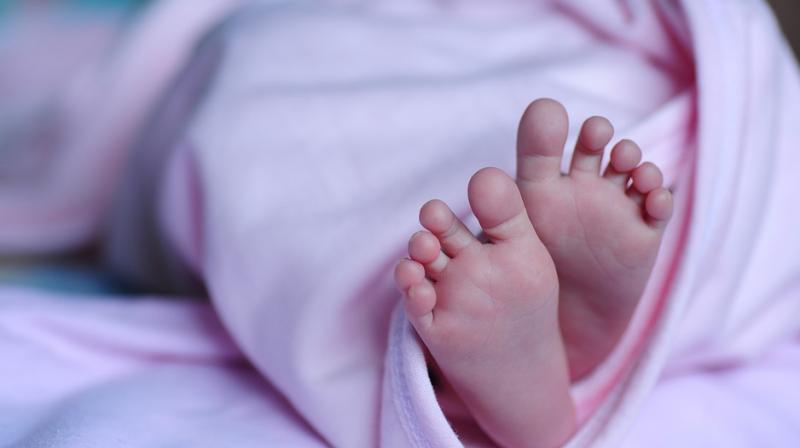Healthy babies don't need apps to monitor vital signs

Smartphone applications paired with sensors to monitor babies' vital signs may appeal to parents anxious to make sure infants sleep safely through the night, but there's no medical evidence proving these products work, a new paper suggests.
These apps linked to sensors in babies' socks, onesies, leg bands and diaper clips are marketed as tools to help parents keep tabs on things like breathing, pulse rate and oxygen levels in the blood and sound alarms when infants are in distress. But they aren't tested or approved for U.S. sale like medical devices and there's little evidence to suggest these monitors are safe or effective, said Dr. Christopher Bonafide, lead author of the opinion piece in JAMA.
"I’ve been there myself, peeking in the door of my son’s room late at night, making sure I could hear him breathing," Bonafide, a pediatrics researcher at the University of Pennsylvania and Children's Hospital of Philadelphia, said by email.
"There is so much anxiety during those first few weeks with a new baby at home, and anything that seems like it might help reduce that anxiety seems incredibly appealing," Bonafide added. "The problem is that a vital sign monitor is not the solution."
New smartphone-integrated monitors currently available in the U.S. or expected to debut soon include Baby Vida, MonBaby, Owlet, Snuza Pico and Sproutling.
While marketing for these products stops short of promising to diagnose, treat or prevent disease, advertisements for the monitors often promise parents peace of mind that comes from an early warning system when something is wrong with babies' health, the study authors write.
Often, marketing plays into parents’ fear of sudden infant death syndrome, or SIDS, with suggestions that the apps and sensors can be used when babies sleep.
SIDS has become much less common in recent decades as doctors have urged parents to put infants to sleep on their backs without pillows or other soft bedding and toys that could pose a suffocation risk. But it still remains a leading cause of infant mortality, killing about 3,500 babies a year in the U.S. alone, according to the American Academy of Pediatrics (AAP).
The AAP advises parents not to use monitors like the ones paired with smartphone apps for home use because there's no evidence this reduces the risk of SIDS. Instead, parents should rely on prevention efforts proven to work, like breastfeeding and sleeping in the same room with their babies, the AAP recommends.
Ideally, babies should sleep in the same bedroom as their parents - but not in the same bed - for at least six months to minimize the risk of sleep-related deaths. The safest spot for infant sleep is on a firm surface such as a crib or bassinet without any soft bedding, bumpers or pillows.
"Perhaps in the future there may be a technology that is in development to lower the risk of SIDS," said Dr. Lori Feldman-Winter, a co-author of the AAP guidelines and pediatrics researcher at Cooper Medical School of Rowan University in Camden, New Jersey.
"However, we are not there yet," Feldman-Winter, who wasn't involved in the paper, added by email. Too often, though, parents assume anything that's for sale must be safe for their child, said Helen Ball, director of the Parent-Infant Sleep Lab at Durham University in the UK.
"We have lost sight of what babies need in order to keep them safe, and many parents and grandparents today do not realize that is it the presence of a responsive and vigilant caregiver that keeps a baby safe, but believe the job can be outsourced to a smartphone/video-monitor/technomattress etc," Ball, who wasn't involved in the paper, said by email.
"Perhaps many of us believe we have better or other things to do with our time than monitor the baby directly with our eyes, ears, and touch," Ball added. "One way in which monitors could hurt kids is by reducing the amount of care and attention they receive directly from their parents."

